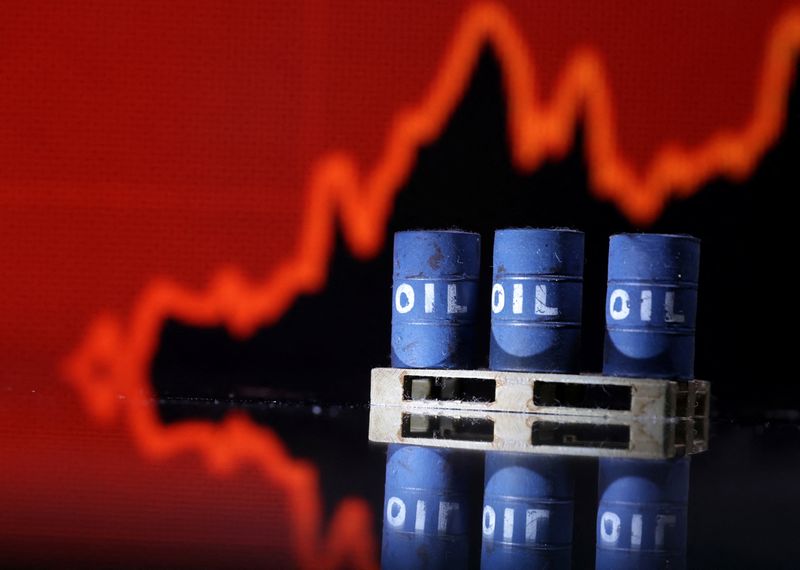By Stephanie Kelly
NEW YORK (Reuters) - Oil prices steadied on Thursday, paring losses from the previous session, after a top Russian official said global oil markets were balanced.
Russian Deputy Prime Minister Alexander Novak said OPEC+ does not see the need for further oil output cuts but is always able to adjust its policy. Russia is part of the OPEC+ group of oil-producers that this month announced a combined reduction of around 1.16 million barrels per day, a surprise decision the U.S. described as unwise and which sent oil prices higher.
Brent crude futures settled up 68 cents at $78.37 a barrel, while West Texas Intermediate crude settled up 46 cents at $74.76 a barrel.
"The small increase in crude oil prices has been caused by short-covering from the sell-off over the last several days," said Andrew Lipow, president of Lipow Oil Associates in Houston.
On Wednesday, the benchmarks dropped almost 4% as jitters about a U.S. economic downturn overshadowed a larger-than-expected fall in U.S. crude inventories. [EIA/S]
Investors are watching economic data for any directional cues on energy demand.
U.S. economic growth slowed by more than expected in the first quarter, although jobless claims fell in the week ending April 22, data showed.
"It's kind of a mixed bag on interest rates, and oil doesn’t know how to take that right now," said Phil Flynn, an analyst at Price Futures Group.
On Wednesday, U.S. data showed capital goods spending fell more than expected. Oil prices were also pressured as weak risk sentiment spread from the banking sector due to First Republic Bank's continued slump.
Analysts see weak refinery margins as a major drag on oil prices, with oil broker PVM's Tamas Varga pointing to heating oil and gas oil as "the main possible culprit for the outsized weakness".
"Inventories in this product are somewhat reluctant to deplete, possibly due to resilient Russian exports," Varga said.
Russia has increased exports of refined products despite an EU embargo and oil price cap, sources told Reuters.
Falling refinery profit margins could lead to cuts in runs and a further reduction in crude demand, said Ole Hansen, head of commodity strategy at Saxo Bank.
Backwardation in the Brent futures curve has eased to just about $2.20 per barrel, having touched $4 a barrel on April 12.

Backwardation, when prices for the front-month contract are higher than contracts for later months, typically indicates tight supply.
Markets will look for direction from the first quarterly print of euro zone gross domestic product growth, due on Friday. The data could affect monetary policy decisions by the European Central Bank when it meets on May 4.
